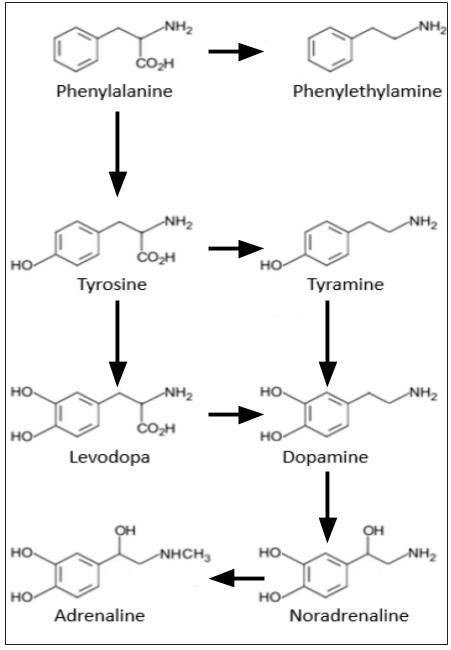 In the last two weeks I have discussed various aspects of our digits, including finger counting and fingerprints. This week I shall start looking at the names we give to the different fingers.
In the last two weeks I have discussed various aspects of our digits, including finger counting and fingerprints. This week I shall start looking at the names we give to the different fingers.
The Terminologia Anatomica, which in 1998 replaced the previous standard, the Nomina Anatomica, gives the names. They are the thumb, which is not always regarded as a finger, the index finger, the middle finger, the ring finger, and the little finger.
I start with the thumb. It comes from the IndoEuropean root TEUƏ , meaning to swell or a lump, reminding us that the thumb, which a thimble will cover, swells out from the hand, as the thigh swells out from the hip. And the root itself swells out in many different directions.
Add a b to the basic root, and you get a swell Latin word, tuber, an underground structure in which a stem or rhizome becomes thickened, like a potato. Tuberous sclerosis is a hereditary disease, with autosomal dominant transmission, associated with dysregulation of the mammalian target of rapamycin pathway (mTOR). [Rapamycin is now known as sirolimus.] The disease is characterized by hard swellings in the brain (e.g. subependymal giant cell astrocytomas), causing developmental delay and seizures, in the skin (facial angiofibromas and shagreen patches), and elsewhere (e.g. cardiac rhabdomyomas, renal angiomyolipomas, and retinal hamartomas). There are mutations in the TSC (tuberous sclerosis complex) genes on chromosomes 9q34 and 16p13. Tuberous sclerosis can be treated with immunosuppressant drugs, such as sirolimus and everolimus. Anti-EGFR antibodies have also been used. PFO Rayer published a colour drawing of a patient with facial angiofibromas in 1835 and von Recklinghausen later reported cardiac myomas and cerebral sclerosis in a neonate who died minutes after being born. The name “tuberous sclerosis” was coined in 1880 by Désiré-Magloire Bourneville, a French neurologist (1840–1909).
With consonantal shift and then metathesis, a tuber becomes a tufer and then a truffle, which also swells underground. In French un truffe was originally an unlikely tale or a joke, from which we get trifle, which meant the same before it came to mean something trivial and then the trivial dessert of the same name, in a form that was originally also called a fool.
Add an l and you get the Greek words τύλος, a knob or lump, and τύλη, a callus. Tylectomy is the surgical removal of a lump, often inelegantly called lumpectomy. The former was introduced in The BMJ in 1972, but the latter, which is of at least the same vintage, has survived better. Tylenol, a proprietary brand of paracetamol (acetaminophen), is unrelated; it comes from the chemical name, N-acetyl-para-aminophenol.
Add an m for the Latin derivative tumere, to swell, giving us tumour, tumescent, and detumescent—down boy!. A tumulus is a pile of earth, a burial mound, or tomb.
Add an r and you get the Greek word τῡρός, cheese, which swells out of the milk from which it is produced by coagulation. And βοῦς, an ox or cow,+ τυρός gives the Greek βούτυρον and the Latin butyrum, or butter. Tyrosine was originally isolated by Liebig from dried cheese, and tyramine is derived from tyrosine. In turn, tyramine can be directly converted to the neurotransmitters dopamine, noradrenaline, and adrenaline, but the main pathway for their synthesis is from tyrosine via levodopa (Figure 1). Tyrothricin, a mixture of the antibiotics tyrocidine and gramicidin, was named in 1940 after the genus of organisms called Tyrothrix, first isolated from cheese in 1878 by Emile Duclaux (1840–1904).

The thumb has many symbolic connections. A tingling in the thumb was once supposed to indicate evil: “By the pricking of my thumbs, something wicked this way comes” (Macbeth iv:1). You could avert witches by turning the thumb into the palm, and holding thumbs was thought to be lucky. In Latin a thumb was pollex, from pollens, powerful, the power being experienced when one is under someone’s thumb. In Roman amphitheatres the crowd would show the power of their pleasure or displeasure by turning their thumbs. As Juvenal put it “verso pollice vulgus cum iubet occidunt populariter”. But which way the thumb was turned to signify death is not known. It may have been up, down, or even inward. Nowadays we give the thumbs down to things we dislike, like tuberous sclerosis, and the thumbs up to things we like, including tubers and truffles, especially of the chocolate variety.
Jeffrey Aronson is a clinical pharmacologist, working in the Centre for Evidence Based Medicine in Oxford’s Nuffield Department of Primary Care Health Sciences. He is also president emeritus of the British Pharmacological Society.
Competing interests: None declared.
